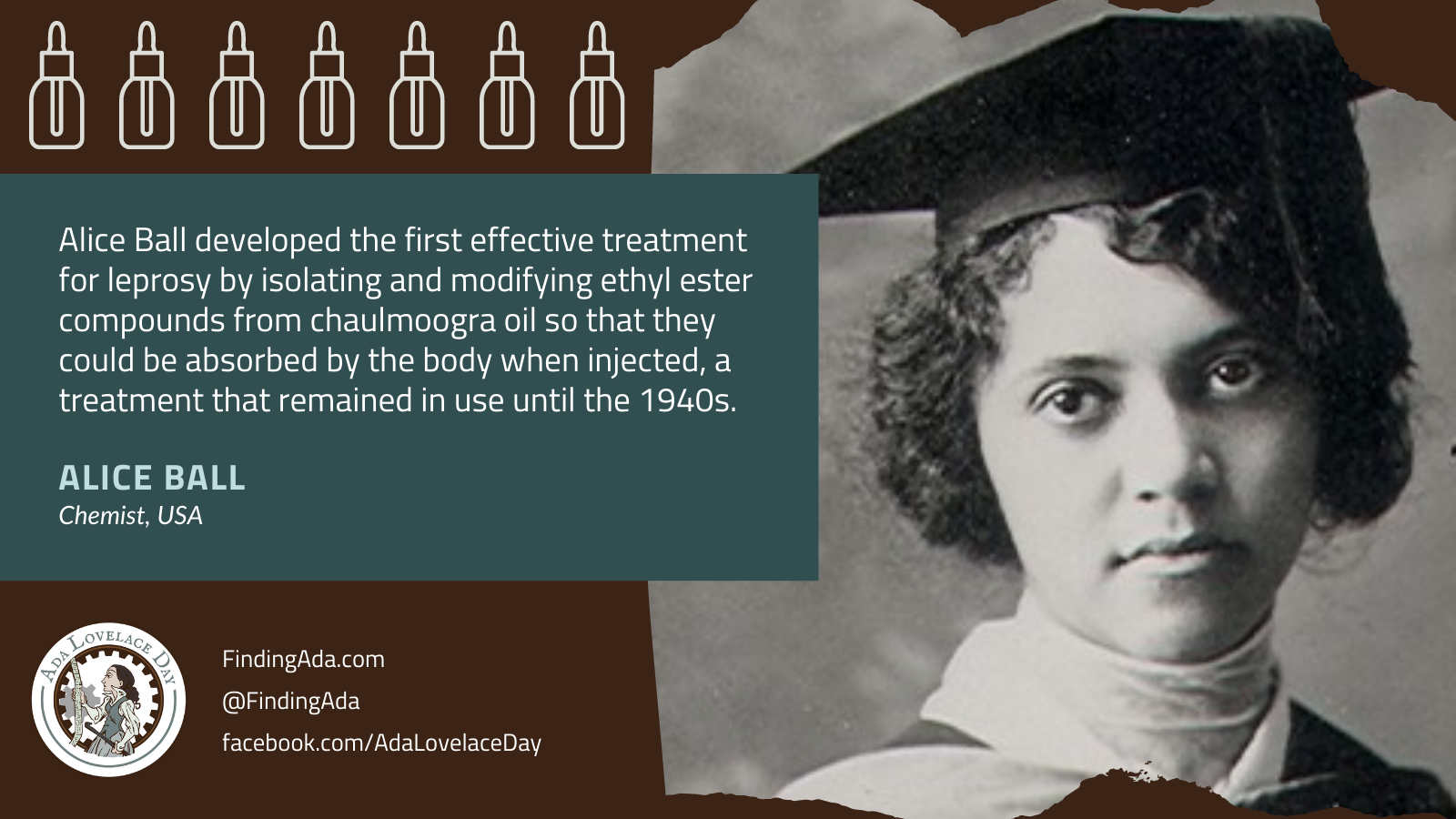
Alice Ball
Alice Ball was an American chemist who developed the first effective treatment for leprosy, or Hansen’s Disease, which until then had a very poor prognosis and was highly stigmatised.
Born in 1892, Ball was the first woman and first African American to earn a master’s degree from the University of Hawaii, and was also the university’s first African American chemistry lecturer.
Since the 1300s, leprosy had been somewhat ineffectively treated using chaulmoogra oil, made from the seeds of the Hydnocarpus wightianus tree. The oil was sticky and thick, making it unsuitable for topical application. When injected, it tended to form blisters under the skin which could develop into abscesses. Its awful taste frequently caused vomiting when it was taken orally.
Ball developed a method to process the raw oil, via saponification, acidification and finally purification to produce ethyl ester compounds which were water soluble and thus more easily absorbed by the body, whilst maintaining the oil’s therapeutic properties. In 1915, she was made head of the chemistry department.
She died a year later, aged just 24, before she had a chance to publish her findings. Her master’s degree advisor, Arthur L Dean – who was also a chemist and later became president of the University of Hawaii – mass produced the chaulmoogra extract and treated some 78 patients at the Kalihi Hospital, each of whom recovered sufficiently to be released. He published his results and named the process after himself, without ever mentioning the work that Ball had done.
Despite an attempt in 1922 by Harry Hollmann, an assistant surgeon at a leprosarium in Honolulu, to gain recognition for Ball, her name is still not widely known, although her process is now known as the Ball Method. The University of Hawaii has named a scholarship for her, and the London School of Hygiene and Tropical Medicine has added her name to its iconic frieze, along with those of Marie Skłodowska-Curie and Florence Nightingale, joining those of 23 male medical innovators.
Further reading
- Alice Ball, Wikipedia
- Alice Ball, History of Scientific Women
- Alice Ball’s treatment for leprosy, Nina Notman, Chemistry World, 18 May 2020
- Alice Augusta Ball (1892-1916), London School of Hygiene & Tropical Medicine
- Women health pioneers honoured on LSHTM’s iconic London building for the first time, London School of Hygiene & Tropical Medicine, 6 September 2019
- Alice Ball pioneered leprosy treatment and then had her work stolen, Gege Li, New Scientist, 15 July 2020